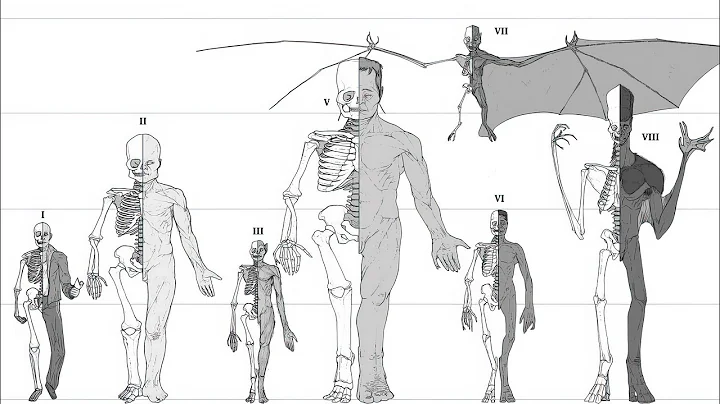At 10 o'clock this morning, Zhejiang Province held the 54th press conference on the prevention and control of the new coronavirus epidemic. The heads of the Office of the Provincial Leading Group for Prevention and Control, the Provincial Development and Reform Commission, and the Provincial Department of Education introduced the relevant situation and answered questions to the public. Concerns.

Chen Guangsheng, executive deputy director of the Office of the Provincial Prevention and Control Leading Group and deputy secretary-general of the provincial government, reported the latest epidemic situation: On September 13, there were no new confirmed cases in our province, and there were 2 new cases of asymptomatic infections (imported from India). All those who have been identified as close contacts have been placed in centralized quarantine. (Click to review: Zhejiang has 2 new cases of asymptomatic infections, imported from India. They are both family members of the same flight as the 1 imported confirmed case reported on the 12th.) As of 24:00 on September 13, our province has had no new cases for 89 consecutive days. Increase the report of local confirmed cases; there are currently 7 confirmed cases being treated in the hospital and 17 asymptomatic infections still under medical observation, all imported from abroad.
Zhejiang has so far discovered a total of 19 cases of epidemics on foreign ships arriving in Hong Kong,
A total of 60 crew members have been affected by the epidemic
According to Chen Guangsheng, in order to strictly prevent the import of overseas epidemics and effectively meet the needs of crew changes, our province has fully implemented the policy of "replace everything that should be done, and replace everything that should be done" "Everything should be inspected and everything should be isolated" work requirements, and efforts should be made to improve relevant systems such as crew health declaration, monitoring of foreign ships entering the port, and ship-shore interface prevention and control. Our province currently has an average daily number of international ships in Hong Kong of more than 400, with more than 8,000 crew members in port. Since April, a total of more than 1,600 ships and 19,000 Chinese crew changes have been completed, with an average daily shift change of more than 120 people. Crew changes after inspection No relevant cases were found.
In order to further plug loopholes and ensure that there are no blind spots in epidemic prevention and control, our province is not only implementing nucleic acid testing for all crew members disembarking from ships after a shift, but also conducting nucleic acid testing for all arriving ship repair ships, ocean-going fishing ships, and international ship crews transferring from foreign trade to domestic trade. All crew members will be tested, and crew members of foreign ships with abnormalities in declaration or health quarantine will also be tested. So far, a total of 19 cases of epidemics on foreign ships arriving in Hong Kong have been detected, involving a total of 60 crew members, including 53 foreign crew members. A total of 7 cases have been confirmed and 46 cases of asymptomatic infection. Sick foreign crew members will be provided with temporary entry transfer for medical diagnosis and treatment in accordance with international humanitarian assistance. Due to proper handling and strict implementation of closed-loop management throughout the entire process, there has not been a single case of imported infection from overseas in the coastal ports of our province.
The highest daily nucleic acid testing volume in Zhejiang Province reached 291,000 tubes
html The average daily nucleic acid testing volume in August was 71,000 peopleThere are 315 medical and health institutions and third-party testing institutions in Zhejiang Province with nucleic acid testing capabilities, and the highest daily testing volume reached 291,000 tubes. In accordance with the principle of "check everything that needs to be tested, and test everything that is willing to be tested", the province's medical and health institutions and third-party testing institutions conducted an average of 71,000 nucleic acid tests per day in August this year. To meet the needs of normalized epidemic prevention and control, Zhejiang Province stipulates that disease control centers at or above the county level and secondary and above hospitals that open fever clinics should have nucleic acid sample collection and testing capabilities, and third-party testing institutions are encouraged to expand nucleic acid testing services.
Chen Guangsheng said at the meeting that Zhejiang adheres to the bottom-line thinking of epidemic prevention and control. According to the standard of daily testing capacity of 1 million people, the province has established 25 nucleic acid testing mobile teams, and emergency reserves of corresponding equipment, reagents and consumables, and built a batch of Rapidly move testing laboratories to ensure that testing needs for clustered epidemics in different regions are met at the same time. Focus on completing the screening of all employees in relevant areas within 5-7 days at the provincial, municipal, and county levels, and rationally allocate community work forces. According to the standard of matching about 270 sampling personnel for every 100,000 people/day nucleic acid testing tasks, a comprehensive sampling and monitoring team will be deployed.
Zhejiang has strengthened the construction of designated hospitals and backup hospitals for COVID-19.
Each city and county (city, district) has determined at least
1 backup hospitals and 1 makeshift hospital construction site.
Chen Guangsheng said at the meeting that fever clinics are an important part of source control. Serve as a "sentinel" for epidemic prevention and control. Zhejiang Province regulates the setting up of fever clinics in medical institutions, stipulating that general hospitals at level 2 and above, hospitals of traditional Chinese medicine, hospitals of integrated traditional Chinese and Western medicine, children's hospitals, etc., shall all set up fever clinics and observation rooms in relatively independent areas.
Chen Guangsheng said that with the normalization of epidemic prevention and control, sporadic cases and even a small-scale rebound of the epidemic will inevitably occur.In this regard, Zhejiang has strengthened the construction of designated hospitals and backup hospitals for COVID-19, and built provincial designated hospitals in Hangzhou, Ningbo, and Wenzhou around improving the medical treatment mechanism of classification, stratification, and diversion. Each district and city has determined at least 1-2 Each city level and each county (city, district) has determined at least one county-level designated hospital. Taking districts and cities as a unit, in principle, 10% of the total number of beds in second-level and above comprehensive hospitals should be prepared for treatment beds, and no less than 10% of the number of treatment beds should be prepared for intensive care beds. At the same time, each city and county (city, district) has determined at least one backup hospital and one makeshift hospital construction site. With respiratory, infectious, critical care and other medical personnel as the main body, provincial and municipal level critical care reserve medical teams will be established based on the standard of 100 people per group.
Strengthen the prevention and control of cold chain food epidemics
A total of 107,000 test samples have been completed in the province, all of which were negative
In order to prevent the spread of the new coronavirus through livestock and poultry meat, aquatic products and their outer packaging and other items transported in the cold chain, Zhejiang The province relies on the "Zhejiang Cold Chain" system to strengthen the accurate traceability of imported cold chain foods, especially those from countries and regions with high epidemic incidences. For cold chain foods imported after May 1, 2020, it is required that a "cold chain food traceability code" must be affixed to the outer packaging of the product; food producers and operators should strictly follow the relevant laws and regulations to conduct incoming inspections, and carry out incoming goods inspections when the products are put into storage. When leaving the warehouse, information entry, code assignment and code scanning are carried out through the "Zhejiang Cold Chain" system. Implement record-keeping management of previously imported cold chain food stocks, and encourage food producers and operators to assign and scan codes.
Focuses on the prevention of people, and carefully carries out the new coronavirus monitoring of cold chain food production, processing, storage, transportation, sales and other links, focusing on strengthening random inspections of imported cold chain foods and cold chain foods from domestic medium and high-risk areas and their employees. Under the normalized conditions of epidemic prevention and control, it is required to select a certain number of farmers' markets and supermarkets for testing every week; the number of samples tested per county (city, district) per week is not less than 70, among which the number of samples from employees is not less than 70. Less than 30 servings. As of September 13, the province has completed a total of 107,000 nucleic acid tests on cold chain food, external environment and employees, and the results were all negative.
The province has completed the three stages of admissions to colleges and universities.
Chen Feng, deputy director of the Department of Education, gave answers on the enrollment and admissions of colleges and universities in our province and the start of the autumn semester of schools at all levels.

Affected by the epidemic, the national college entrance examination has been postponed for one month, so the enrollment of colleges and universities in our province has been postponed accordingly. So far, the province has completed three stages of admissions, enrolling a total of 306,000 new students, including 156,000 undergraduate students and 150,000 junior college students. There are currently a small number of remaining programs that are soliciting volunteers, and the overall acceptance rate is expected to reach 95%. Some higher vocational colleges will also expand enrollment for six categories of groups, including retired military personnel, enterprise employees, unemployed people, agricultural technicians, migrant workers, and high-quality farmers. Thanks to the efforts of the Provincial Education Examination Agency, the number of students enrolled in high-level domestic universities in our province has increased for five consecutive years. This year, more than 100 students have been added, allowing more candidates to have the opportunity to "go to a good university." At the same time, we need to remind all college freshmen that they must follow the requirements of the college admission notice and do a good job in personal epidemic prevention and control and health declaration to ensure safe and smooth entry into college.
The total class attendance rate of primary, secondary, and primary school students in the province is 98%
Chen Feng introduced that primary, secondary, and kindergarten schools across the province basically start around September 1, and colleges and universities start in batches based on staggered peak times for old students and new students. As of September 11, the total attendance rate of primary and secondary school students in the province was 98%, including 99.1% of primary and secondary school students and 93.5% of kindergarten attendance. Among the 110 colleges and universities in the province, 61 have started school, and college students have arrived. The class rate is 94.3%, and the remaining 49 colleges and universities will also start classes in the near future.
After continuous comprehensive investigation, as of September 13, the province's education system has had no new local confirmed cases in the province for 205 consecutive days, and no new local suspected cases in the province for 192 consecutive days. However, autumn and winter are the periods when various diseases are more common, especially among primary and secondary school students and young children, who are more prone to colds, diarrhea and other diseases. Since the start of the first half month of primary and secondary schools and kindergartens in the province, about 1.6 out of 10,000 students (that is, more than 1,000 people) found to have abnormal health status during daily morning and noon inspections. At present, the campus order is generally normal and stable.
Campus prevention and control measures in colleges and universities must be
"hard with one hand" and "soft with the other"
At the press conference, Chen Feng focused on the epidemic prevention and control work in colleges and universities. The sources of college students are complex, and the campus is densely populated and mobile, making the task of epidemic prevention and control very arduous. Currently, with the gradual resumption of international exchanges, some foreign teachers and students abroad will also return to school one after another, which puts forward higher requirements for "foreign import prevention" work. Therefore, the campus prevention and control measures of universities must be more "strict" than other institutions in society. Generally speaking, colleges and universities are required to be "hard" and "soft", and to combine "hardness" and "softness".
's "first-hand strength" means to fully implement the requirements of the campus' "Technical Plan for the Prevention and Control of the New Coronavirus Epidemic in Autumn and Winter" and do a good job in nucleic acid testing and health monitoring of key personnel; at the same time, we must adhere to and improve a series of management measures that have been effective in the first half of the year. Measures, through scientific "intelligent control" means, resolutely guard the "door" of the school.
"A gentle hand" means to fully consider the actual situation and needs of teachers and students, achieve humane management, prevent excessive control and simple management, especially prevent "one-size-fits-all" prohibition of students from entering and leaving the campus, and should be based on local epidemic prevention and control situation and requirements, accurately grasp policies and dynamically adjust measures.
The Provincial Department of Education also reminded schools at all levels that when using ultraviolet light, disinfectant water, etc. to disinfect the environment, they should neither lower the disinfection standards at will nor increase the dosage or over-disinfect at will to prevent secondary harm. We also hope that the majority of students will understand and cooperate with the campus epidemic prevention and control measures, and at the same time develop hygienic and self-disciplined living habits, and jointly safeguard the hard-won epidemic prevention and control results. Whether it is strengthening management and control or optimizing services, the fundamental purpose is to enable students to safely and successfully complete their studies, grow healthily, and become all-round talents.
statement: This article is reprinted for the purpose of conveying more information. If there is an error in the source annotation or infringement of your legitimate rights and interests, please contact the author with proof of ownership and we will promptly correct and delete it. Thank you.





















